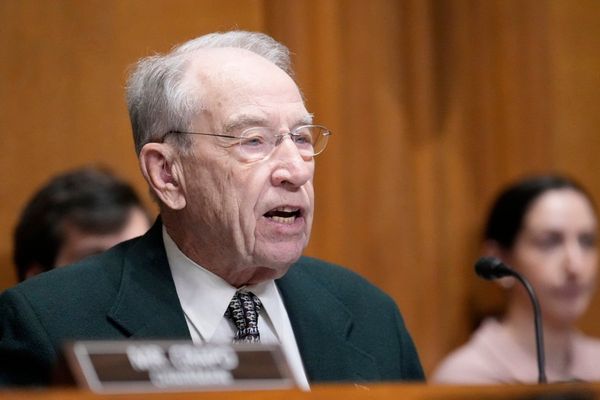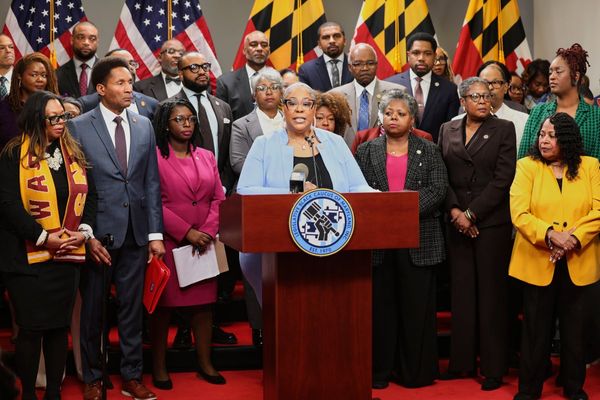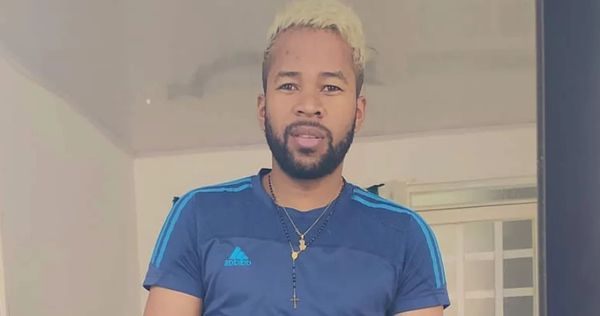Speaker – this budget builds on the progress we’ve made, together. It’s a plan to help with the cost of living.
Cost of living is the first thing mentioned … but you would hope it’s more than just a plan.
With two new tax cuts, and higher wages – more bulk billing, and more help with electricity bills. Cheaper medicines and less student debt.
Tax cuts, energy rebates, Medicare boosts – it sure feels like election season.
Speaker – our economy is turning the corner. Inflation is down, incomes are rising, unemployment is low, interest rates are coming down, debt is down, and growth is picking up momentum.
You left out “deficits are higher than expected”.
And just on that “debt is down” part. Since 2022, sure. But not if you’re measuring against last year’s budget forecast.
This progress has been exceptional, but not accidental. The credit belongs to Australians in every corner of our country.
We’ve come a long way, but there’s more work to do.
This budget is our plan for a new generation of prosperity in a new world of uncertainty. It’s a plan to help finish the fight against inflation.
Some will argue tax cuts and other stimulus aren’t really a knockout punch against inflation, especially if households are in a spending mood.
Every Australian taxpayer will get a tax cut next year and the year after, to top up the tax cuts which began last July. This will take the first tax rate down to its lowest level in more than half a century.
These additional tax cuts are modest but will make a difference. The average earner will have an extra $536 in their pocket each year when they’re fully implemented.
Combined with our first round of tax cuts, this rises to $2,190. And the average total tax cut will be $2,548, or about $50 a week.
These tax cuts won’t fully kick in until 2027. Plus for many Australians, rent, groceries and other essentials have risen by much more than $50 a week. So whether this is an election-winning policy is still to be proven.
We will also increase the Medicare levy low-income thresholds, which is extra tax relief for more than a million Australians.
This will help those least able to afford healthcare, but bulk-billing clinics are still in short supply in many areas and that will take time to change.
Speaker, electricity prices went down 25% here last year but they’re still putting pressure on households around the world.
Two rounds of energy rebates have helped take some of the sting out of energy costs.
Tonight, we’re providing $1.8bn more energy bill relief. Every household and around 1m small businesses will receive energy rebates until the end of 2025. This means cutting another $150 off bills this year.
That’s about $2.88 a week.
Speaker, we know that Australians are still under pressure, and a lot of that pressure is felt at the checkout.
That’s why we’re cracking down on the supermarkets. By empowering the competition watchdog, making the food and grocery code mandatory, increasing penalties and boosting competition.
At the same time, we’re targeting excessive surcharging, scams and unfair trading practices that harm consumers.
Great in theory, but the ACCC has said there’s no silver bullet against the supermarket oligopoly. We can’t all live near an Aldi.
New plans for cost of living and health are accompanied by new investments in housing.
We are tackling the housing shortage from every responsible angle –making home ownership more affordable for young Australians and young families in particular.
Our $33bn plan will help build 1.2m new homes before the decade is out.
The 1.2m new homes by 2030 figure seems impressive but it’s unclear if this will keep up with population growth over that period. Governments don’t exactly have a great track record of meeting housing targets.
More homes, more quickly. This includes $54m to accelerate the uptake of modern methods of housing construction, which is all about building more homes, more quickly.
Looking to prefabricated homes to boost housing supply addresses concerns about long delivery timeframes in construction. Prefab homes could also be cheaper.
Tonight we’re expanding our Help to Buy scheme. This is part of our efforts to help more Australians buy a place of their own.
We will update the property price and income caps so more first home buyers are eligible for the scheme.
This will help 40,000 Australians buy their first home in the next four years. The changes will mean they can access a bigger range of homes and buy one that suits them.
And we’re easing pressure on the housing market by banning foreign investors from buying established homes, and cracking down on foreign land banking as well.
The silence on renters here is particularly noteworthy. There doesn’t appear to be much in this budget specifically for Australians facing soaring rents and poor living standards. In a rental market with such low vacancy rates there’s little incentive for landlords to make improvements.
In this budget, we are investing more than $3bn to support the production of Australian-made green metals, like aluminium and iron. Building on the tax incentives for critical minerals and green hydrogen we legislated this year.
We’re also backing clean technologies through our Future Made in Australia innovation fund and by recapitalising the Clean Energy Finance Corporation. This will help develop new industries in clean-energy manufacturing, green metals and low-carbon liquid fuels, and unlock private investment.
This agenda is about recognising our future growth prospects lie at the intersection of our industrial, resources, skills and energy bases and our attractiveness as an investment destination – so we can grasp the jobs and opportunities of the net zero transformation.
Clean energy and jobs. There’s not much else of note for the environment in this budget.
Support for local businesses. Speaker, in difficult conditions around 25,000 businesses have been created each month on average since we came to office.
We respect and admire the hard work, aspiration and sacrifice behind those record numbers, which is why we’re going into bat for small and local businesses in this budget.
Protecting them from unfair trading practices; funding our Buy Australian campaign to support local producers; providing new resources for the regulator to level the playing field for smaller players.
And delivering tax relief for hospitality venues, brewers, distillers and wine producers.
An ad campaign that successfully convinces us to buy locally produced goods over significantly cheaper foreign alternatives will be some task.
Infrastructure like the NBN is essential for communities, students and businesses, and to the productivity of our nation.
So are the roads and railways connecting our regions to our cities and supporting economic growth.
This budget provides $17.1bn over 10 years for these projects, including: $7.2bn to upgrade the Bruce Highway in Queensland – the single largest investment ever in the Bruce; $2.3bn for western Sydney, with $1bn for the rail network alone.
That’s $1bn to reserve the corridor for a potential link-up of Sydney’s rail network in the west at some point in the future if a future state government wishes to spend many more billions on it.
And $2bn towards transforming Sunshine station, taking our Melbourne airport rail investments to $7bn.
Melbourne airport rail, still the subject of government planning six decades on from when the idea was first flagged. Even if it happens, travellers will still be riding the Skybus for years to come.
Speaker, in these uncertain times, economic security and national security are increasingly intertwined.
We’re supporting stability and prosperity in our region, by helping to shore up banking services in the Pacific.
We have invested an extra $50.3bn in defence by the mid-2030s, to help keep Australians safe. It means defence funding will grow beyond 2.3% of GDP by the early 2030s.
And we’re investing $45m in our initial response to the 2024 independent intelligence review.
Security and safety, and sending a signal to our enemies.
In a tight budget, we’ve made room to boost our defences, strengthen Medicare, help people doing it tough, build more homes and invest in the future.
We’ve done all this at the same time as we’ve overseen the biggest ever fiscal improvement in a single term of government.
Tonight’s budget is $207bn better than we inherited. It’s in better shape in every year over the forward estimates than it was three years ago.
In our first two years, we posted the first back-to-back surpluses in nearly two decades. Our deficit this year has almost halved since we came to office.
There we have it, the first mention of the deficit.
Next year’s deficit is $42bn, lower than what was forecast at the last election, and lower than at the mid-year update. Gross debt will hit $940bn this financial year, $177bn less than what we inherited.
Again, comparing debt and deficits with last year, not the last election, tells a less impressive story.
The plan at the core of this budget is about more than putting the worst behind us. It’s about seizing the best of what’s ahead of us. To build a stronger economy – and a future we can all be proud of.
Tldr: the economy is OK, we’re heading into an election, here’s some tax cuts, energy rebates and cheaper meds to keep you happy, and maybe some more housing down the track.







